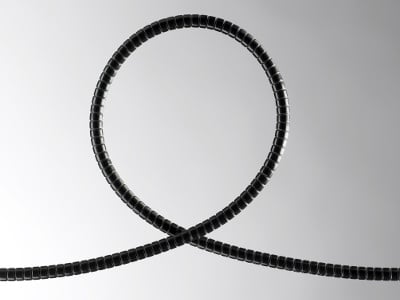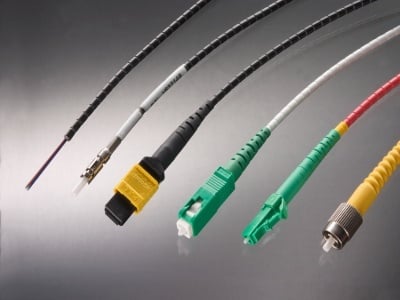 When it comes to deploying fiber networks, installers and planners face multiple challenges. This is particularly true when it comes to the last drop section, between the curb and the premises, or inside buildings themselves. The natural landscape and the built environment vary between deployments, which makes every install a standalone civil engineering project that requires planning, skill and experience to deliver.
When it comes to deploying fiber networks, installers and planners face multiple challenges. This is particularly true when it comes to the last drop section, between the curb and the premises, or inside buildings themselves. The natural landscape and the built environment vary between deployments, which makes every install a standalone civil engineering project that requires planning, skill and experience to deliver.
Time is money, so deployments need to be carried out as quickly as possible – without compromising quality, reliability or upsetting home or business owners.
Traditional methods of installing fiber (blowing or pulling) are not well suited to the demands of the last drop. This has led to the emergence of pushable fiber – a relatively new way of meeting deployment challenges.
This blog looks at what pushable fiber is, its advantages and why it is needed.
Pushable fiber in a nutshell
As its name suggests, pushable fiber is simply pushed to its destination, normally inside a duct, either by hand or for longer distances by low cost, handheld machines.
Like every fiber cable, pushable fiber is made up of a number of optical fibers in a protective sheath. It is typically smaller than cables that are pulled, comprising 1-24 fibers, giving it a size advantage in cramped spaces.
What sets pushable fiber apart is the material and properties of the sheathing. It has to marry two conflicting properties – stiffness and flexibility.
Stiffness is important if you want to push a cable over long distances, such as between the curb and a property, without it kinking. The harder the cable the further it can be pushed within a duct, helped by having a lower surface friction. Less stiff cables can potentially fold in on themselves, potentially damaging the fiber.
Read our eBook to find out how pushable fiber makes FTTP fast and affordable:
When comparing pushable cables look for one that scores 60 or above on the Shore Durometer D scale, which measures the hardness of rubber and plastics – 100 is the stiffest possible in the range. Toughness also means the fiber is better protected, increasing reliability.
At the same time pushable cables need to be flexible. Very few installation routes are completely straight, and many have to navigate through multiple 90 degree bends in order to successfully get around obstacles. Obviously a cable that is too stiff simply won’t bend to go round corners, dramatically limiting installation options.
Leading pushable fiber cables are therefore designed to balance stiffness and flexibility. At m2fx, for example, we use a unique grooved sheath called Miniflex™ to provide the right combination of low friction, protection and hardness.
The advantages of pushable fiber
 When deploying a fiber network, the majority of costs are around the last drop. As outlined above each connection is a miniature civil engineering project, with all the labor and equipment costs that this entails.
When deploying a fiber network, the majority of costs are around the last drop. As outlined above each connection is a miniature civil engineering project, with all the labor and equipment costs that this entails.
Combining pushable fiber with pre-connectorised /pre-terminated cable brings time and costs down even further. It eliminates the need for expensive fusion splicing equipment and provides factory tested, certified signal performance across the last drop.
Innovations in connector design have also led to the development of smaller profiles, allowing network installers to use even smaller microducts, on a par with blown fiber tube sizes.
Pushable fiber brings down costs in three key ways:
1. Equipment
Unlike blowing, pushable fiber requires a minimum of capital investment in equipment. For shorter runs cable is simply pushed to its destination by hand, while for longer distances inexpensive handheld machines can be used. These use a belt or driven wheels to push the cable, increasing the speed and sometimes the length of installation routes. When pre-connectorised cables are used there is no need to use costly fusion splicing machines, reducing cost further.
2. Skills
Blowing machines require skilled operators, with expensive training. Due to the complexity of installing cable by pulling, this method also normally requires experienced crews, which pushes up costs. Fusion splicing also requires highly skilled technicians if pre-connectorisation is not used. In fact, in some countries people with the right skills may simply not be available, making projects impossible to complete.
By contrast pushable cables can be installed by crews with no specialist training. In many municipalities in the United States, electricians or ground staff have successfully completed pushable deployments, with minimal training or supervision.
3. Time
When it comes to fiber rollouts time is money. The more installs completed in a single day, the lower the overall project cost, and consequently the faster the operator will receive a payback on their investment. Again, pushable fiber (and pre-connectorisation) reduces the time needed per install. Unlike blowing, there is no need to set up/tear down large equipment for every job. Due to its mix of stiffness and flexibility, deployment speed for pushable fiber is faster than pulling cable, as it is easier and faster to complete complex installation routes. This all translates to more installs per day.
Fiber installations are growing across the globe – but network operators face significant challenges to bring down costs and speed up deployments. Traditional methods are ill-suited to the last drop, meaning that planners and installers should investigate the advantages of pushable and pre-terminated fiber if they want to deliver fast, cost-effective yet high quality connections.




Comments